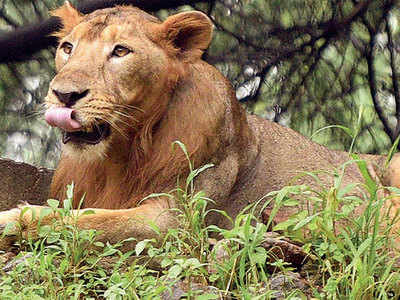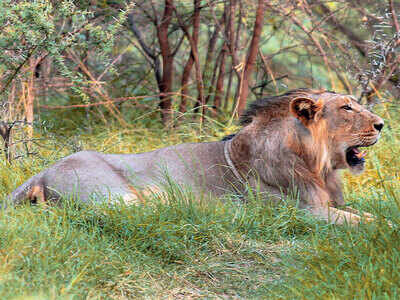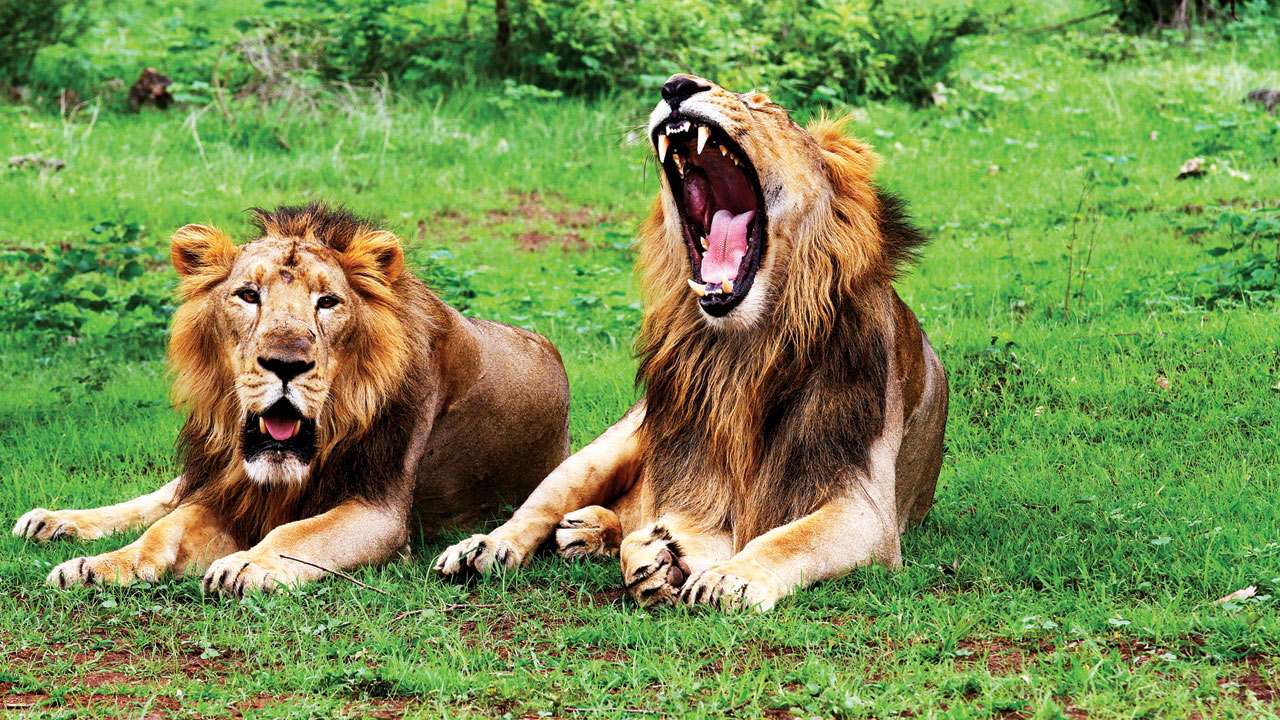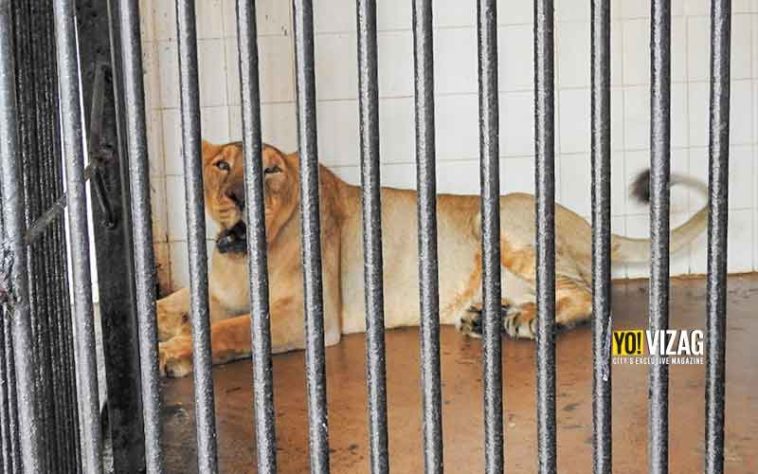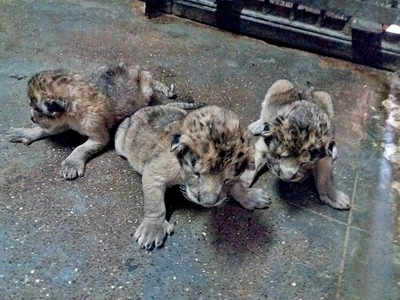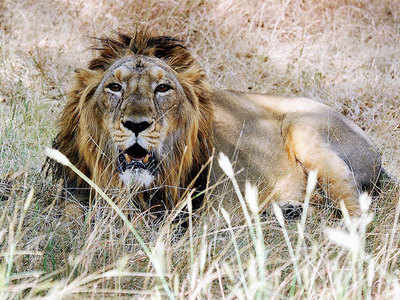
Gir is the only natural habitat of world-famous Asiatic lions
The
transfer of senior officials, who worked hard in controlling the spread
of Canine Distemper Virus in Gir last year, to handle projects at
Statue of Unity was discussed in Gujarat High Court during the hearing of a suo moto petition over unnatural lion deaths in Gir.
The court-appointed amicus curiae Hemang Shah quoted Mirror’s report ‘Is govt ignoring Gujarat’s ‘pride’ for SoU projects?’ (AM, Jan 26) during the hearing on Monday. He raised concern regarding the transfer of officials, who tackled CDV that claimed lives of 30 lions in Gir last year, being given charge of setting up jungle safari and animal park at State of Unity by October.
Mirror had reported how the state government was rushing to finish the projects before its inauguration in October. And for this, it has transferred the senior forest officials to SoU to get the projects ready in time.
Gir is the only natural habitat of world-famous Asiatic lions. A CDV outbreak in Dalkhaniya range made news after it ended up killing at least 30 lions between September and December last year. However, with five lion deaths reported since June 27 this year, experts and environmentalists believe the state government should not have transferred all officials experienced with CDV as they are needed to monitor the situation in Gir to prevent another outbreak.
During the hearing, the forest department submitted report on the work done so far for conservation of lions. Later, the forest officers went on social media to justify their efforts towards lion conservation.
Confirming this, Additional Advocate General P K Jani said, “The amicus curiae raised the issue but it was neither part of any official record nor substantiated by supportive documents.
I have submitted to the court that the government is taking world-class efforts to conserve the lions. We have filed an exhaustive affidavit in the court about steps taken. We have assured the court that more efforts will be made if required.”
Meanwhile, Prime Minister Narendra Modi during his recent ‘Mann Ki Baat’ – a radio talk show --aired on Sunday claimed that the lion population has been increasing since he took charge as chief minister of Gujarat.
To this, Gujarat Congress chief spokesperson Manish Doshi said, “It is not true that the lion population started increasing only after he came to power. Its population never declined after lion population estimation of 1968.” The population estimation is conducted scientifically every 5 years. Doshi added, “The complete report of lion population is available on the website of the Forest department. The government has not shown seriousness to the subject as required. There is a threat to the lion population due to several activities like illegal lion show, illegal forest-dwellers and illegal mining.”
MIRROR ON TWITTER
@CCF_Wildlife
Please appreciate the steps taken for conservation of lion by the Govt..Radio callering,Tablets to field staff,cctv , dron, e-eye, creation of new Shetrunji wildlife division
@dcfsasangir
Conservation of Gujarat’s pride (Gir Lions) is F.D.’s priority & recently many steps (technology intervention, veterinary care, strengthening of conservation efforts & infrastructure, etc.) has been taken to conserve the Gir Ecosystem
@DCFGirEastDhari
Do u knw tht last year’s CDV outbreak control was exceptional since 95% of lion population in Gorongoro crater was wiped out by similar disease outbreak in 1990s. Pl be balanced & adopt attitude of giving credit rather always criticising.
@DCF_GirWest
It can never be the case! Lion conservation is the only priority. All facets of conservation i.e. habitat improvement & management, health monitoring & protection are being taken care.
@PccfWildlife
Please do balanced reporting. Strengthening of existing present 9 rescue Centers and 3 more rescue centers will be established. Further, to avoid man animal conflict 33 Rapid Response Team and 10 Rescue Team are established
@conserve GIR
“birth n deaths of lions r natural”. If deaths are natural irrespective of causes thn what is stopping you from releasing 29 healthy vaccinated lions?? first of all why thy were vaccinated If death a natural process ? @GujForestDept U undone ur image by cruely confining ths lions..
@kaushik_teraiya
Forest department Promised before 1yr , we will make 24×7 Helpline for Lion conservation. We are still waiting for that number. Pls let us know if u make any helpline.
@Girdalkhaniyal1
@DCF_GirWest u dint even take my challenge whn i said tht the Lion nos r far less in ur division thnnin 2015.. Just hve the guts to cme out in open and accet the shortfalls and acknowledge the inaptness of the management in #Lion deaths.. #shame
https://ahmedabadmirror.indiatimes.com/ahmedabad/others/officials-transfer-discussed-in-hc/articleshow/70865734.cms
The court-appointed amicus curiae Hemang Shah quoted Mirror’s report ‘Is govt ignoring Gujarat’s ‘pride’ for SoU projects?’ (AM, Jan 26) during the hearing on Monday. He raised concern regarding the transfer of officials, who tackled CDV that claimed lives of 30 lions in Gir last year, being given charge of setting up jungle safari and animal park at State of Unity by October.
Mirror had reported how the state government was rushing to finish the projects before its inauguration in October. And for this, it has transferred the senior forest officials to SoU to get the projects ready in time.
Gir is the only natural habitat of world-famous Asiatic lions. A CDV outbreak in Dalkhaniya range made news after it ended up killing at least 30 lions between September and December last year. However, with five lion deaths reported since June 27 this year, experts and environmentalists believe the state government should not have transferred all officials experienced with CDV as they are needed to monitor the situation in Gir to prevent another outbreak.
During the hearing, the forest department submitted report on the work done so far for conservation of lions. Later, the forest officers went on social media to justify their efforts towards lion conservation.
Confirming this, Additional Advocate General P K Jani said, “The amicus curiae raised the issue but it was neither part of any official record nor substantiated by supportive documents.
I have submitted to the court that the government is taking world-class efforts to conserve the lions. We have filed an exhaustive affidavit in the court about steps taken. We have assured the court that more efforts will be made if required.”
Meanwhile, Prime Minister Narendra Modi during his recent ‘Mann Ki Baat’ – a radio talk show --aired on Sunday claimed that the lion population has been increasing since he took charge as chief minister of Gujarat.
To this, Gujarat Congress chief spokesperson Manish Doshi said, “It is not true that the lion population started increasing only after he came to power. Its population never declined after lion population estimation of 1968.” The population estimation is conducted scientifically every 5 years. Doshi added, “The complete report of lion population is available on the website of the Forest department. The government has not shown seriousness to the subject as required. There is a threat to the lion population due to several activities like illegal lion show, illegal forest-dwellers and illegal mining.”
MIRROR ON TWITTER
@CCF_Wildlife
Please appreciate the steps taken for conservation of lion by the Govt..Radio callering,Tablets to field staff,cctv , dron, e-eye, creation of new Shetrunji wildlife division
@dcfsasangir
Conservation of Gujarat’s pride (Gir Lions) is F.D.’s priority & recently many steps (technology intervention, veterinary care, strengthening of conservation efforts & infrastructure, etc.) has been taken to conserve the Gir Ecosystem
@DCFGirEastDhari
Do u knw tht last year’s CDV outbreak control was exceptional since 95% of lion population in Gorongoro crater was wiped out by similar disease outbreak in 1990s. Pl be balanced & adopt attitude of giving credit rather always criticising.
@DCF_GirWest
It can never be the case! Lion conservation is the only priority. All facets of conservation i.e. habitat improvement & management, health monitoring & protection are being taken care.
@PccfWildlife
Please do balanced reporting. Strengthening of existing present 9 rescue Centers and 3 more rescue centers will be established. Further, to avoid man animal conflict 33 Rapid Response Team and 10 Rescue Team are established
@conserve GIR
“birth n deaths of lions r natural”. If deaths are natural irrespective of causes thn what is stopping you from releasing 29 healthy vaccinated lions?? first of all why thy were vaccinated If death a natural process ? @GujForestDept U undone ur image by cruely confining ths lions..
@kaushik_teraiya
Forest department Promised before 1yr , we will make 24×7 Helpline for Lion conservation. We are still waiting for that number. Pls let us know if u make any helpline.
@Girdalkhaniyal1
@DCF_GirWest u dint even take my challenge whn i said tht the Lion nos r far less in ur division thnnin 2015.. Just hve the guts to cme out in open and accet the shortfalls and acknowledge the inaptness of the management in #Lion deaths.. #shame
https://ahmedabadmirror.indiatimes.com/ahmedabad/others/officials-transfer-discussed-in-hc/articleshow/70865734.cms


